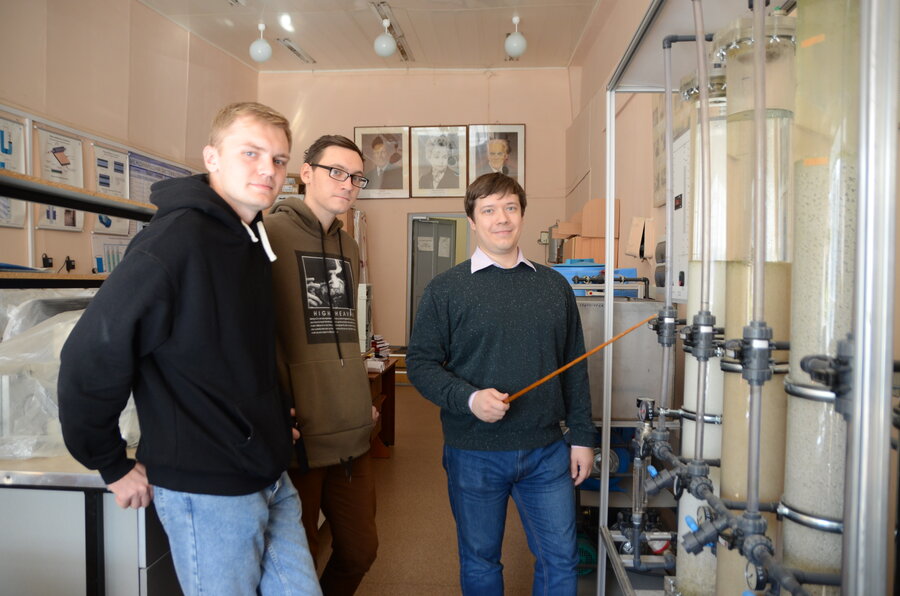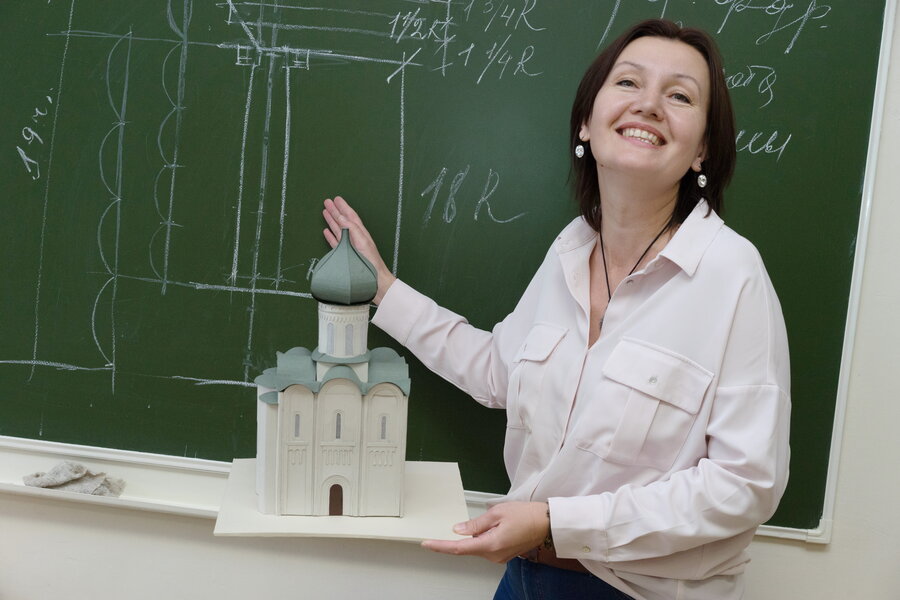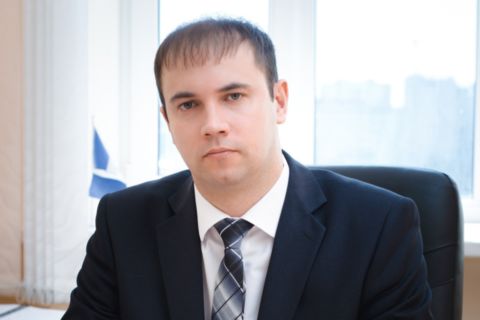The Institute of Architecture and Construction celebrates its 70th anniversary.
Story of establishing
The Faculty of Engineering and Construction was established due to the need in training qualified construction specialists for the regions in the Urals, Kazakhstan, and Siberia. On February 2, 1952, Decree No.188 was issued by the USSR Ministry of Higher Education “On Organizing a Faculty of Engineering and Construction at the Chelyabinsk Polytechnic Institute”, which staring from September 1st prescribed to open the admissions to the first year of studies in the programmes on the Industrial and Civil Construction, and the Urban Construction and Economy, 50 students per each. Back then, classes were held at the Construction and Erection Technical Secondary School. Among the first teachers of the Construction Training disciplines, working as part-time teachers, were Fedor Shumilin (teaching the course on Construction Materials), Boris Zilberg (delivering lectures on Engineering Geodesy), and assistant at the CPI Department of Theoretical Mechanics Aleksandr Kuznetsov (giving practical classes on Geodesy). In February of 1953, the first Construction-specified Department of Industrial and Civil Construction was established. Fedor Shumilin was appointed to act as the Department Head, and Giliarii Bakalinskii was appointed Associate Professor; German Meshcheriakov was also hired as the department staff member, and assistant Aleksandr Kuznetsov was transferred here from the Department of Theoretical Mechanics. This department and this teaching staff became the origin of the Faculty of Engineering and Construction (Faculty of Architecture and Construction since 1989) of the Chelyabinsk Polytechnic Institute.
Order of his appointment was signed by the Institute Rector Aleksei Sychev on August 27, 1953. Thus, the Faculty was being formed during the whole academic year 1952-1953. In 1954, the Faculty expanded and grew as it was joined by the Department of Strength of Materials (from the Automobile and Tractor Engineering Faculty) headed by Associate Professor David Gokhfeld, and by the Department of Engineering Graphics headed by Associate Professor Nikolai Senigov. The Faculty Council and public organisations were created. By the beginning of the new academic year in August of 1954, yet another was organized at the Faculty — the Department of Building Technologies. The Faculty structure was further developed in 1955-1957 with the formation of the Department of Building Mechanics and Engineering Structures, Department of Urban Construction and Economy, Department of Building Materials, Department of Architecture, and Department of Water Supply and Sewerage. In spring of 1957, the Faculty of Engineering and Construction had to pass its maturity exam as it was preparing for its first graduation of construction engineers. Among those admitted to complete their diploma projects were 72 students. The defending was successful. Six graduates were awarded diplomas with honours. The formation and development of the Faculty, its departments, laboratories, and programmes is related to outstanding people who proved themselves as organizers and talented and experienced supervisors, scientists and teaching staff members.
The Faculty deans greatly contributed to the development of the higher professional education in Construction:
• Fedor Shumilin in 1953-1961;
• Andrei Abarinov in 1961-1965;
• Vitalii Solomin in 1965-1968;
• Aleksandr Marchenko in 1968-1969;
• Fedor Serebrovskii in 1969-1979;
• Iurii Maksimov in 1979-1985;
• Vladimir Spasibozhko in 1985-2014;
• Dmitriy Ulrikh, since 2014 (since 2016 working as the Institute Director).
In 1988, the Department of Water Supply and Sewerage opened training of environmental engineers in the programme on the Environment Protection and Rational Use of Natural Resources. The department was headed by Doctor of Sciences (Chemistry), Professor Iurii Sukharev and was renamed into the Department of General and Engineering Ecology. Many postgraduates were being trained there, candidate theses were being defended, and monographs were being published. Iurii Sukharev was elected a full member of the Russian Academy of Natural Sciences. In 1989, the first competition-based admission of students to the Faculty’s new programme on Architecture was held, later — the programme on the Design of Architectural Environment.

Formation of the Institute of Architecture and Construction
In spring of 1992, a decision was made to rename the Faculty of Engineering and Construction into the Faculty of Architecture and Construction. This was explained by the need to adjust the Faculty name in accordance with the content of specialists training and improve its competitiveness in the field of the higher professional education.
The Faculty programmes' structure kept developing, and a programme on the Urban Cadastre was opened at the Department of Town Planning in 1997. The Department of Building and Engineering Structures signed an agreement with the Regional Public Roads Administration, obtained the license and began training engineers in the programme on the Motor Roads and Aerodromes in 1997. And in 1998 the first students were admitted by the department to the Construction programme with the possibility of multi-level training to obtain the degrees of a Bachelor, Engineer, and Master.
In 2001, the license was obtained and the training started within the programme on the Expert Review and Management of Real Estate at the Department of Town Planning. In the same year the Department of General and Engineering Ecology began training of ecologists and users of natural resources within the Use of Natural Resources programme.
In 2002, the Department of Architecture and the Department of Design were separated from the Faculty, and the Faculty of Architecture was created at SUSU.
In 2008, the Department of General and Engineering Ecology with its programmes in the Use of Natural Resources and the Environment Protection and Rational Use of Natural Resources was transferred to the Faculty of Chemistry, newly created at the university.
In 2012, the Faculty fully switched to a multi-level training of Bachelors and Masters in such programmes as Construction, Land Planning and Cadastres, and Heat Power Industry and Thermal Engineering.
In 2012, the license was obtained and the training of specialists started within a new programme on the Construction of Unique Buildings and Facilities.
The Faculty of Architecture and Construction consisted of 7 graduate and 1 general-education departments, where 113 teaching staff members worked, including 18 doctors of sciences, professors and 67 candidates of sciences, associate professors. At this Faculty, 1250 full-time students were simultaneously obtaining their education. A huge part in the organization and development of the Faculty programmes and departments was played by their heads, who recruited and fostered the teaching staff, opened and headed scientific directions, developed the material and technical resources and the scientific methodological base of the educational process. Among those people were: Tamara Baryshnikova (Candidate of Sciences (Engineering), Associate Professor, Head of the Department of Water Supply and Sewerage); Nikolai Senigov (Associate Professor, Head of the Department of Graphics); Petr Kovalenko (Doctor of Sciences (Engineering), Professor, Head of the Department of Town Planning); Vladimir Lakhtin (Doctor of Sciences (Architecture), Professor, Head of the Department of Town Planning; Aleksandr Oatul (Doctor of Sciences (Engineering), Professor, Honored Builder of the Russian Soviet Federative Socialist Republic, Honorary Academician of the Russian Academy of Architecture and Construction Sciences, Head of the Department of Reinforced-concrete and Masonry Structures); Vasilii Gertsev (Candidate of Sciences (Engineering), Associate Professor, Head of the Department of Building Technologies); Vadim Turkin (Doctor of Sciences (Engineering), Professor, organizer and Head of the Department of Heat and Gas Supply and Ventilation); Ivan Shepelev (Doctor of Sciences (Economics), Professor, Head of the Department of Economics and Construction Management); Igor Kazantsev (Professor, Head of the Department of Economics and Construction Management); Stanislav Golovnev (Head of the Department of Construction Technology); Boris Trofimov (Head of the Department of Building Materials); Iurii Kutin (Head of the Department of Town Planning); Valerii Saburov (Head of the Department of Building and Engineering Structures).
The Institute of Architecture and Construction, as the structural subdivision of SUSU (NRU), was organized my merging the Faculty of Architecture and the Faculty of Architecture and Construction in 2016. At present, the Institute comprises 7 departments with the staff of about 150 teaching members, including from the far abroad. More than 90 staff members are holders of the academic degrees of doctors and candidates of sciences. Over 2000 students are obtaining their education at the Institute in various modes of study: full-time, full-time/part-time, and as attendees of professional retraining programmes of the Centre for Continuing Education. The Institute of Architecture and Construction has formed strong ties with construction companies, construction-industry enterprises, design engineering organisations, architectural studios, and city and region administrations. Close ties have also been formed with the leading universities in the USA, Germany, Finland, Hungary, Czech Republic, China, and Bulgaria.

Alumni as the pride of the Institute
Our graduates adapt quickly and work efficiently in the major construction companies, in design engineering and research and development institutes, in architectural studios, in town-planning and architecture departments, and ministries and administrations. They prove themselves as teachers at technical secondary schools and universities, and they take positions of trust at the state legislative and executive authorities. Here are just a few of the well known examples:
For several years, Leonid Semichastnyi, graduate of the first year of graduation, headed the major construction association in the Ural region, Glavyuzhuralstroi, and managed the Main Architectural Planning Department of the Administration of the Chelyabinsk Region;
Viktor Khristenko worked as Deputy and Acting Chairman of the Government of the Russian Federation during 1999-2004, Minister of Industry and Power Generating Sector in 2004-2008, and Minister of Industry and Trade of the Russian Federation in 2008-2012;
Aleksandr Pochinok worked as the Minister for Taxes and Levies of the Russian Federation in 1999-2000, and Minister of Labour and Social Development of the Russian Federation in 2000-2004;
Viacheslav Tarasov was the Head of the City of Chelyabinsk in 1991-2005;
Vladimir Miakush worked as the Chairman of the Legislative Assembly of the Chelyabinsk Region in 2005-2021;
Stanislav Mosharov worked as the Chairman of the Chelyabinsk City Duma in 2010-2019, and Deputy Governor of the Chelyabinsk Region;
Viktor Tupikin worked as the Minister of Construction and Infrastructure of the Chelyabinsk Region in 2009-2021;
- graduate of the Industrial and Civil Construction programme, Iu.R. Karlikanov is the First Deputy Chairman of the Legislative Assembly of the Chelyabinsk Region, and Director General of OOO "PKO "ChelSI";
- graduate of the Industrial and Civil Construction programme, K.A. Shishov is a poet, prose writer, local history expert, member of the Union of Writers of Russia, Chairman of the Chelyabinsk Region Culture Foundation;
- graduate of the Manufacture of Building Materials, Products and Constructions programme, R.Ia. Akhtiamov is Director General of OOO UralNIIstrom;
- graduate of the Industrial and Civil Construction programme, V.V. Anzigitov is Director of AO Chelyabstalkonstuktsiya;
- graduate of the Industrial and Civil Construction programme, O.B. Klimov is the Head of the Main Directorate of the Ministry of Emergency Situations of Russia for the Chelyabinsk Region, Major General;
- graduate of the Industrial and Civil Construction programme, V.V. Panov is a deputy at the State Duma of the Russian Federation, and President of the "Promass" Chelyabinsk Employers Association;
- graduate of the Industrial and Civil Construction programme, V.A. Karamanov is the Chairman of Board of Directors of Uralneftegazstroi Trust, and Vice President of Transnefteprodukt company, Moscow;
Anatolii Mankovskii is Director General of AO "Chelyabstroi" construction company; and many other alumni.
The following Faculty graduates defended their doctoral theses: S.G. Golovnev, Iu.A. Ivashenko, V.N. Shirokov. B.Ia. Trofimov, V.M. Astashkin, A.B. Valt, V.V. Likholetov, O.V. Loginovskii, A.P. Melchakov, Iu.V. Ignatiev, A.N. Potapov, V.F. Saburov, A.Kh. Baiburin, T.N. Chernykh, V.D. Olenkov.
The Institute of Architecture and Construction of Today
The Institute comprises 7 departments, "Construction" Educational Scientific Centre, "Nasledie" Research and Development Centre, and Youth Design Bureau, where under the guidance from he experienced teachers, students conduct research and projects-related works. The Centre for Continuing Education offers programmes on professional retraining, including within the Digital Departments National Project, and organizes the courses of advanced training for the construction industry workers, as well as within the government programs jointly with employment centres.

In the course of the academic year, the Institute actively worked within the frameworks of the "Elite" training and project-based learning. In 2022, 384 students are completing their studies at the Institute of Architecture and Construction, with 72 graduates thereof will be awarded their Bachelor's, Master's and Specialist degrees with honours. And also, 72 international students have successfully completed their studies here.
Graduates of the Institute of Architecture and Construction efficiently work in government authorities, ministries and administrations, production and industrial complexes of the construction sector, major construction companies, design engineering institutes, architectural and design studios, research and development laboratories, and they take positions of trust at the state legislative and executive authorities.




